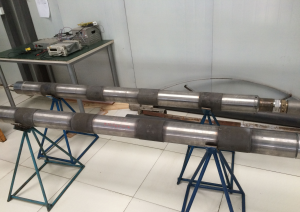

After drilling, the need for determining the well’s worth and its potential to pay off arises. To identify reservoir characteristics, estimate the amount of hydrocarbons in place and their productive zones along with distinguishing between oil, gas and water zones and other petrophysical parameters, the need for an advanced fit-to-purpose Formation Evaluation services is essential identifying pay zones as well as enabling a better perforating plan
When gamma radiation takes place naturally within the formation, accurate measurements are delivered when operators use the Eastern United natural gamma ray tool. Natural gamma radiation is detected by the tool’s innovative combination of a scintillation crystal and a photomultiplier which characterizes rock sediments in a borehole, defines clay content, controls depth as well as correlating among different logging runs.

Separating the Gamma ray spectrum into its components – Uranium (U), Thorium (Th) and Potassium (K), allows log analysts to identify:
The Array Induction Tool (AIT) from Eastern United gives operators more accurate response, enhanced invasion profiling, and more accurate water saturation calculations. Our new generation of induction tools easily delivers data from different depths, and at vertical resolutions of both two and four feet. Built into the tool is a sophisticated electrode that detects and measures the spontaneous potential. Easy to transport, and featuring both standard deep and medium resistivity output, induction tools from Eastern United operate at multiple depths of investigation. It uses multi-spacing and multi-frequency measurements to acquire a complete set of data from the formation surrounding the borehole. The multiple-frequency measurements allow for an improved skin-effect correction and data quality checks.
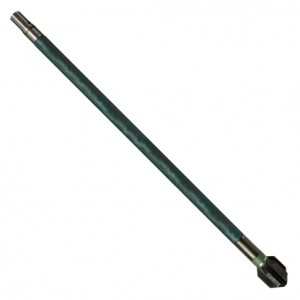
The Dual Lateral Log Tool – DLT provides both deep and shallow measurements to determine invaded and virgin zones resistively. By analyzing and combining this information with other logging curves, you can directly and accurately distinguish permeability layer, determine oil-water layers as well as identifying and evaluation oil-bearing formation characteristics

The Micro Spherical Focused Log (MSFL) provides a measurement of the flushed zone resistivity to calculate flushed zone saturation. The tool’s special structure and electrodes provide a measurement that are less affected by the mud cake and when combined with other resistivity measurements, helps determine true formation resistivity. The tool also has caliper measurement. The advanced version of the MSFL is the Four-Arms Micro Spherical Focused Lateral Log (MSF – 4). It has a four-arm caliper and more microelectrodes built in for a higher resolution.
The Litho Density Tool (LDT) determines formation lithology and porosity by measuring bulk density and photoelectron absorption index closely correlated with rock matrices since the Gamma Ray absorption in the earth’s formation depends mainly on the atomic number of matrix elements. Highly recommended for rock lithology determination, as the fluids existing in rock pores affect the photoelectron absorb index within rocks. The density tool uses a pad, which is set against the formation that is being analyzed. High-energy rays are absorbed by the formation and a spectrum analysis delivers accurate data, which compensates for mud cake effects by using separate detectors.
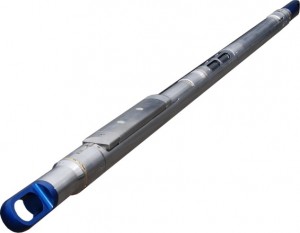
The Compensated Neutron Tool (CNT) instrument is a radiation-logging device used to indicate formation porosity in open or cased boreholes by continuously emitting fast neutrons, which collide with various nuclei in the formation. Its detectors are designed to respond primarily to thermal neutrons. In well-logging applications, depending on what the detector count indicates, high or low formation porosity can be identified.

The Dipole Array Acoustic Tool (DAA) provides a full-wave monopole, dipole and cross dipole acoustic logging and acquires acoustic data for compressional, shear and stoneley evaluation. Its significant design covers a wider range of capabilities, and incorporates the real-time acquisition of two-directional dipole measurements aligned 90 degrees apart in the wellbore.
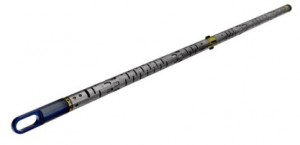
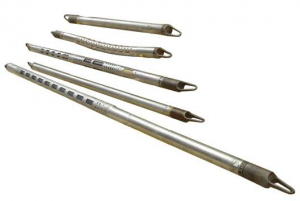
The Nuclear Magnetic Resonance Tool (NMR) measures hydrogen for porosity and relaxation rates of protons. It can accurately and directly measure key factors that influence the ability of a well to produce commercial quantities of oil or gas.
It is used in the early stages of the well to:
